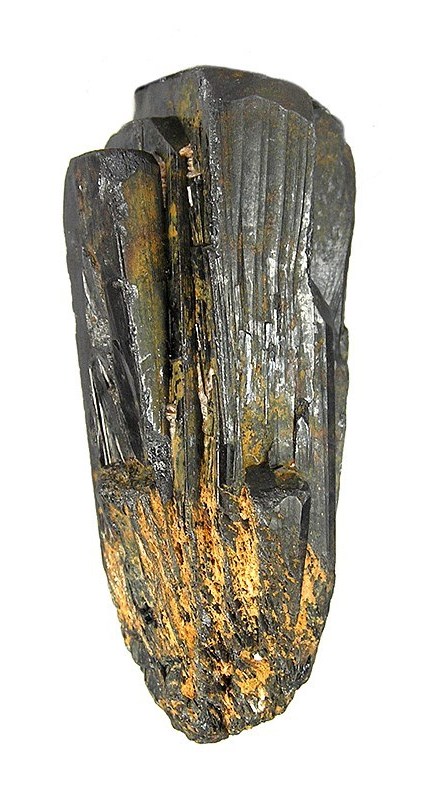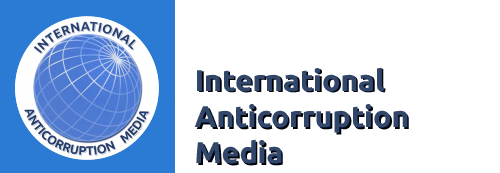This material belongs to: OCCRP.
With little warning last November, a company started to build a gold-processing plant in Venezuela’s Bolivar state – home to many tribal people and an area called Las Brisas-Las Cristinas, believed to contain the country’s largest gold deposits.
Pasiano Elliman, a leader of the Pemon tribe, said his people reacted immediately. “We demanded to talk with the person in charge and told him that his workers couldn’t do anything in our territory without the approval of the community’s legitimate authorities,” he told OCCRP reporters.
“Since they didn’t listen, the next day we returned with the support of all eight native communities in San Isidro. We took our bows and arrows, we showed them our unity and strength. That’s when they shut down the works.”
But while the Pemon people may have won a battle, the war over resource exploitation continues across the Orinoco Mining Arc, an area about the size of Bulgaria or the US state of Virginia that is believed to contain mineral resources worth billions of dollars.
The stakes for both sides are tremendous. The government – which is desperate to add new revenue streams to Venezuela’s shrinking economy – has authorized four companies to exploit the area, with more to come.
But critics say few of the companies seem to have the requisite experience, and those that have begun to work have faced resistance. Meanwhile, activists say that environmental protections are being ignored and the rights of native people trampled.
Elliman says this skirmish is just the beginning. “Our priority is the fight for our lands,” he says. “All of this area, including Las Brisas-Las Cristinas, belongs to us.”

Thinking big and moving fast
When global oil prices fell after the 2008 financial crisis, Venezuela’s then-President Hugo Chávez saw an opportunity to implement one of his signature big ideas and turn his country’s economy in a new direction. Oil, after all, accounted for 95 percent of its exports and a large share of its gross domestic product. Venezuela’s economy needed something new.
Chávez proposed turning to other minerals believed to lie beneath the country’s jungles, including gold, diamonds, and a metallic ore called columbite-tantalum, or coltan for short. Coltan, which is refined into the metal tantalum and used to manufacture electronic devices like mobile phones, gaming equipment and advanced weaponry, doubled and tripled in value around 2011 before dropping this year to more usual historic levels.
Chávez claimed that coltan worth billions of dollars, as well as other valuable rare earths, might lie beneath a huge crescent of land along Venezuela’s Orinoco River that became known as the Mining Arc.
“Coltan has prices in the international market superior to gold and diamond,” he said in 2010. “The [coltan] reserves in Venezuela could, in a very preliminary evaluation, approach $100 billion.”
But the state of Bolivar is also home to two national parks and a population of 1.4 million, many of whom belong to native tribes whose rights to the land are enshrined in the Venezuelan constitution.
Look before you leap, expert warns
Geological engineer Noel Mariño, who has conducted extensive studies of the issue, believes that Chávez may have painted too rosy a picture of the potential mining riches, particularly as regards coltan.
He says the true amount, quality, and even location of the ore remains unknown.

“There has been no serious prospecting, and exploration and exploitation initiatives have been undertaken blindly, without addressing all technical, environmental and economic variables,” he says. “Companies that are venturing into the Orinoco Mining Arc looking for coltan will have to start from scratch.”
Mariño has spent decades honing his expertise in mineral extraction. With support from Venezuela’s National Institute of Geology and Mining, he has studied the coltan deposits in the Parguaza area of Cedeño municipality, near the country’s western border with Colombia.
He also worked for almost 25 years in CVG Bauxilum, the state-owned bauxite and aluminum producer.
Mariño notes several important factors that will determine whether Venezuela can make significant money from coltan, including how rich the ore is, where it is, and what type of technology is needed to extract it. He says this implies huge, long-term investments that the state cannot finance alone.
New-minted companies win speedy access
Despite these problems, the Orinoco Mining Arc project is moving forward. After its announcement by Chávez, the plans languished for five years, until they were picked up again in early 2016 by the former president’s successor, Nicolás Maduro.
Just a few months later, the companies were ready for action.
On Aug. 5, 2016, Faoz Corporation Ltd. became the first company to sign up for a slice of the Orinoco Mining Arc. Its agreement with the government followed a “mixed-company” model, in which the state retains majority control. Other companies, such as Supracal Ltd., soon followed suit.
By April, when OCCRP reporters were visiting the area, Faoz was the only company to have a visible presence in the 111,183-square-kilometer crescent stretching south of the Orinoco River. The Faoz operation is in the Parguaza sector, Cedeño municipality, Bolívar state, at the western end of the mining arc near the border with Colombia. Traditionally a gold-mining area, it is believed to also contain deposits of coltan ore.
Faoz was created on July 29, 2016, just seven days before signing the deal with the government. It has no known experience in mining or handling coltan, and is represented by Luisa Herminia Alcalá Otero, then 67, who had previously worked for the state-owned PDVSA oil and gas company.
On Aug. 5, Alcalá signed an agreement with then-Environmental Mining Development Minister Roberto Mirabal to create the Parguaza Ecosocialist Mixed Mining Company Inc., a joint venture between the state and Faoz, to extract coltan and other minerals, including cassiterite, ilmenite, tin, zircons, diamonds, and gold.
The minerals lie beneath the Guiana Highlands, one of the oldest geological formations on earth. The area includes part of the Amazon forest, sometimes called “the lung of the world,” as well as the ancestral homeland of native peoples and communities. Questions of environmental sustainability and respect for cultural diversity have helped fuel a heated debate over the Orinoco Mining Arc, both in Venezuela and abroad.
Venezuelan law specifies that mining activities must be preceded by environmental and socio-cultural impact studies. None have been completed for any of the planned Orinoco Mining Arc projects. Consequently, the human rights organizations Provea and Laboratorio de Paz, as well as the Los Andes University’s Work Group on Native Affairs, have demanded that the government obey the law.
On Dec. 2, 2016, the government promised to do so at a hearing before the Inter-American Commission on Human Rights in Panama. “There are plans to carry out the environmental studies demanded by the Constitution and the law before starting operations,” said Larry Davoe, a member of the Venezuela delegation.
Yet just a week later, on Dec. 9, Parguaza began operations at its first mining camp, without the required studies.The Venezuelan government hasn’t explained how it decides which national or foreign companies are chosen to mine in Bolívar state. When relaunching the Orinoco Mining Arc project in February, President Maduro announced that 150 companies were interested in pursuing mining exploration and exploitation projects.
But so far, few have done so. Since August 2016, 14 companies have signed agreements to move forward. The Venezuelan companies include Faoz Corporation, Ecomine, Supracal, Hidrocal and the state-owned Military Corporation of Mining, Oil and Gas Industries (Camimpeg, for its initials in Spanish.) The foreign companies are Gold Reserve, Energold Mineral, Guaniamo Mining, Barrick Gold, Bedeschi, MPE International, Afridiam, Yankuang Group, and Camc Engineering Co.
Since January 2017, little information has been released about ongoing talks between the government and South Africa regarding additional mixed companies, or about MOUs for exploration activities with two Venezuelan companies headed by Palestinian businessmen: Sakan Ltd. and Comercializadora Orinoco River.
So far, four mixed companies have been formally created, assigned to areas and authorized to start operations: Parguaza, Oro Azul and Metales del Sur in Cedeño municipality; and Siembra Minera, in Sifontes municipality.
Only Parguaza is known to have started work, in December of 2016 – and it has met with determined opposition.


